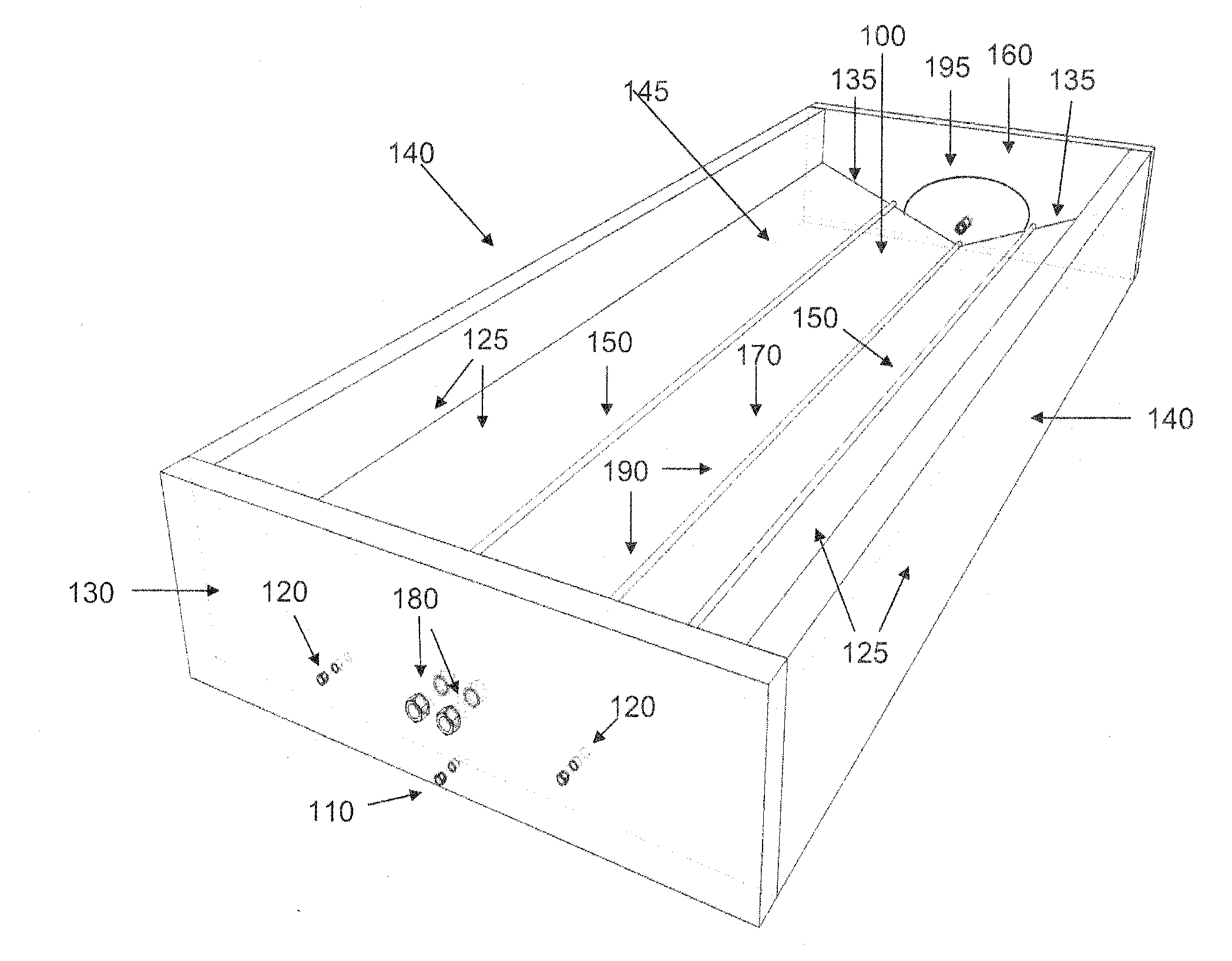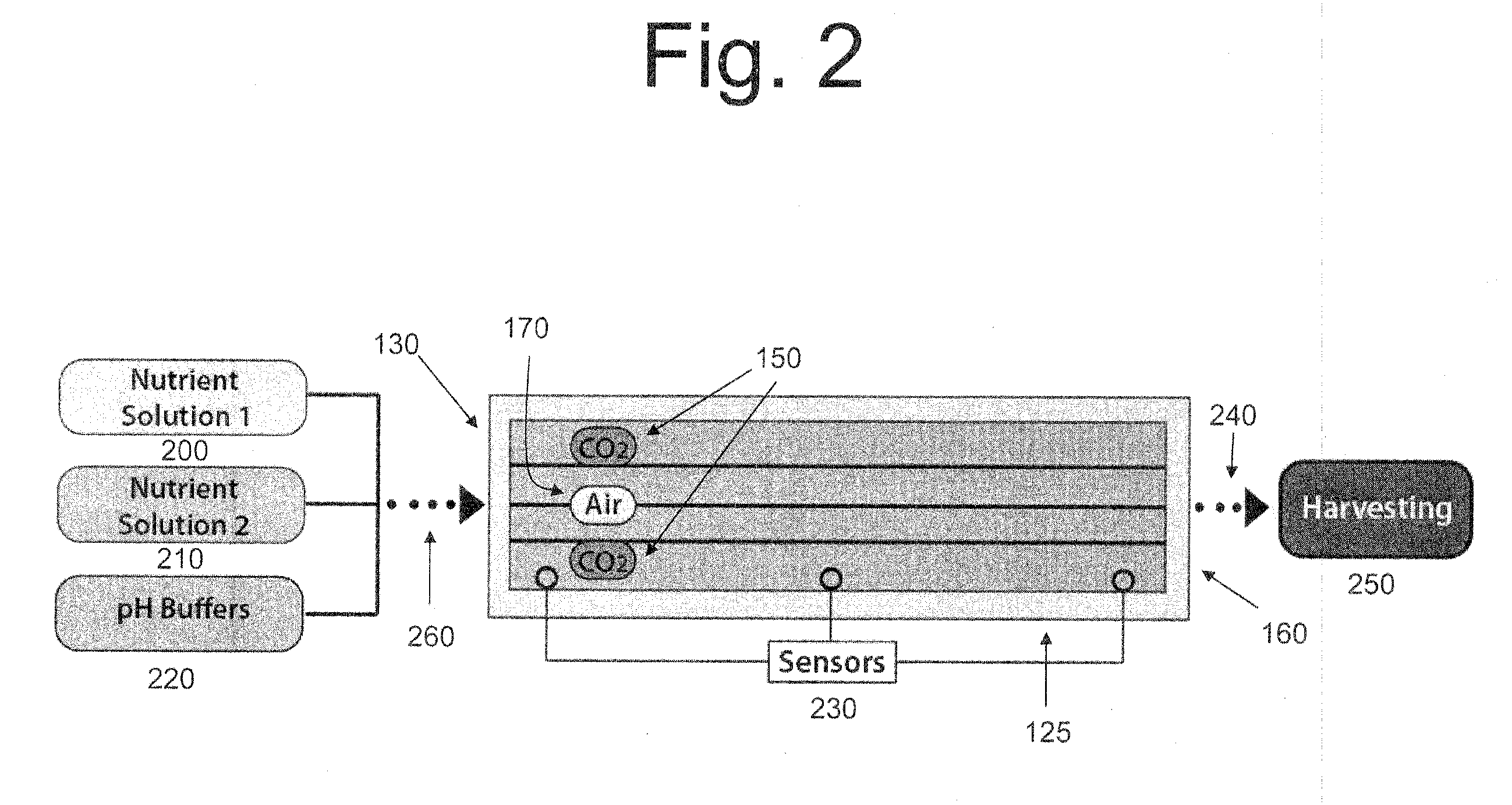V-Trough Photobioreactor System and Method of Use
a photobioreactor and v-trough technology, applied in biochemistry apparatus and processes, plant cultivation, horticulture, etc., can solve the problems of high device productivity, increased economic burden, and insufficient volume loss, etc., to achieve less mixing energy, increase productivity, and improve efficiency
- Summary
- Abstract
- Description
- Claims
- Application Information
AI Technical Summary
Benefits of technology
Problems solved by technology
Method used
Image
Examples
Embodiment Construction
[0023]In one aspect, a photobioreactor is disclosed which comprises a cavity defined by: a substantially V-shaped base comprising: two base walls, said base walls meeting proximate to an axis defining an interior angle, each base wall comprising: a sloped portion and a substantially vertical portion, a proximal end and a distal end, and a length extending along said axis and a width extending perpendicular to said axis; the cavity being further defined by: a proximal side wall adjacent to said proximal end, and a distal side wall adjacent to said distal end; and the photobioreactor system further comprising: at least one gas delivery system disposed within said cavity and extending parallel to said axis, and at least one carbon dioxide delivery system disposed within said cavity and extending parallel to said axis.
[0024]In another aspect, a kit for assembling a photobioreactor is disclosed which comprises two base walls, a proximal side wall, a distal side wall and a first liner cap...
PUM
 Login to View More
Login to View More Abstract
Description
Claims
Application Information
 Login to View More
Login to View More - R&D
- Intellectual Property
- Life Sciences
- Materials
- Tech Scout
- Unparalleled Data Quality
- Higher Quality Content
- 60% Fewer Hallucinations
Browse by: Latest US Patents, China's latest patents, Technical Efficacy Thesaurus, Application Domain, Technology Topic, Popular Technical Reports.
© 2025 PatSnap. All rights reserved.Legal|Privacy policy|Modern Slavery Act Transparency Statement|Sitemap|About US| Contact US: help@patsnap.com



